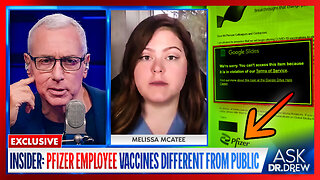WD-40, Miracle Juice In A Spray Can. The Story Behind It.
What can you do with a can of it? Lubricate M-16s, catch bigger fish, de-ice door locks, clean turtles, repel pigeons, remove dog shit, make a flame-thrower, and a bunch of other things you probably never thought of.
If you could take the American spirit which is equal parts Daniel Boone, Chuck Yeager, and Elon Musk—and distill it into an aerosol, it would be a blue-and-yellow can of WD40. A 1983 survey revealed that 4 in every 5 American homes had a can of WD40 in them.For more than 60 years, we’ve been relying on the 40th attempt of a Water Displacement formula to fix, well, whatever needs fixing. The WD40 website promotes dozens of uses for their product, as well as a list of 2,000 uses submitted by actual users. Some are genius. Some are just plain wacky. And some are stupid as hell.
The story of WD40 begins in 1953, when the fledgling Rocket Chemical Company—all three employees—set out to create a line of rust-prevention solvents and degreasers for the aerospace industry. Working out of a tiny lab in San Diego, it took them 40 attempts to perfect a water-displacement formula. And so Water Displacement 40 came to be. An aerospace contractor named Convair first used the product to protect the outer skin of the Atlas Missile, which had external steel “balloon” fuel tanks that were so thin and delicate that they had to remain pressurized even when empty to keep from collapsing. Over time, Convair employees began sneaking the stuff home for their own uses. By 1958, the product was commercially available.
There have been all sorts of guesses about what exactly is in WD40, but the company isn’t saying. In 2009, Wired Magazine sent some to a laboratory to have it analyzed. The verdict? Fish oil, Vaseline, and “the goop inside homemade lava lamps.” Fact is, nobody knows. The formula has never been patented, apparently from fear somebody would find out. Instead, it’s a closely guarded trade secret locked up in a bank vault in San Diego.
By 1960, the company more than doubled in size, growing to seven people, and sold an average of 45 cases per day from the trunks of their cars to hardware and sporting-goods stores in the San Diego area.
The small-niche nature of the business began to change in 1961, when Hurricane Carla struck the U.S. Gulf Coast. WD-40 Employees came in on a Saturday to produce extra product to meet the needs of disaster victims, to recondition flood- and rain-damaged vehicles and equipment. Before long, it spread like wild fire into American households and industry.
In 1969, the Rocket Chemical Company was renamed for WD40, which by then was its sole product. Early versions of the can show a rocket on the label. But by the time of the name change, it was long gone. It’s not just for rockets anymore. During the Vietnam war, packages containing the spray were being sent to soldiers to keep their finicky M-16s cycling.
For years, the number one complaint about the product was that people lost the little red straw that came with each can. In 2005, the company introduced the foldable Smart Straw to solve this problem.
Some extremely weird uses for the product have been reported over the years. Police once used WD40 to remove a naked burglar who had become wedged inside of ductwork. It was used to help pull a boa constrictor from pipes on the underside of a bus. A pet owner used it to free his parakeet—and himself—from sticky fly paper.
The unusual use most of us are likely aware of is as a fish attractant. According to the company, customers call in all the time claiming that they’ve caught their biggest fish ever after spraying hooks or lures with WD40 and thus assume that the product must have fish oil in it. But that is not the case, say the owners, and they do not recommend using the spray as a fish attractant.
Some tout WD40 as a waterproofer for boots and shoes. It’s also recommended to stop wicker chairs from squeaking. Some anglers use it to de-ice the guides of a fly rod. It also stops mice from squeaking, mostly because a good shot of it will kill a mouse. It kills bugs, bees, and spiders, too.
Sales of WD40 have gone up since the COVID-19 pandemic began, a whopping 26 percent over the last year. The company’s CEO, Garry Ridge, says that the nationwide popularity is to lock-downs and people working on renovation projects. The company’s market value is over $4 billion. And the reason I wanted to share this all with you today is because I saw a bumper sticker that read, “Duct Tape Makes It Stop – WD40 Makes It Go.”
PRODUCTS:
WD-40: https://amzn.to/3JK6g95
SPONSORS:
ROBB ORIGINALS: https://RobbOriginals.com
THE CALIFORNIA WINE CLUB: https://shrsl.com/27lqb
BLUE COOLERS: https://shrsl.com/28ljf
BETTERHASH: https://www.betterhash.net/?ref=65168
CONNECT WITH ME:
WEB: http://robbjarrett.com
PODCAST: http://robbcast.com
LINKEDIN: http://linkedin/in/robbjarrett
YOUTUBE: https://bit.ly/3k75ark
FACEBOOK: http://fb.me/robbjarrettpodcast
TWITTER: http://twitter.com/robbjarrett
INSTAGRAM: http://instagram.com/robbjarrettpodcast
MINDS: http://minds.com/robbjarrett
RUMBLE: http://instagram.com/robbjarrettpodcast
LOCALS: https://locals.com/member/RobbJarrett
ODYSEE: http://minds.com/robbjarrett
-
 LIVE
LIVE
Right Side Broadcasting Network
3 days agoLIVE REPLAY: "Chase the Vote" Town Hall With President Donald J. Trump - 6/6/2024
12,341 watching -
 LIVE
LIVE
The Quartering
4 hours agoSteven Bannon To Prison, Biden Deuces His Pants, Wokest Star Wars Disaster & More
3,093 watching -
 LIVE
LIVE
Quite Frankly
4 hours ago"D-Day, Boyd Flu, Unusual Cancers, Open Lines" 6/6/24
811 watching -
 1:07:10
1:07:10
TheMonicaCrowleyPodcast
4 hours agoThe Monica Crowley Podcast: The War Within
353 -
 LIVE
LIVE
Dr. Drew
5 hours agoExclusive: Pfizer Insider Says Employees Received Different mRNA Shots Than Public, Was Fired After Voicing Her Concerns w/ Melissa McAtee & David 'Nino" Rodriguez – Ask Dr. Drew
2,545 watching -
 1:20:32
1:20:32
Kimberly Guilfoyle
6 hours agoThe Left’s Attack on the American Dream, Live with Barry Habib & Chadwick Moore Plus Special Appearance by Russell Brand | Ep. 132
24.1K21 -
 1:34:58
1:34:58
Redacted News
5 hours agoHere we go! Putin WARNS NATO "stop this now" sends Russian NAVY to Cuba | Redacted w Clayton Morris
72.8K203 -
 1:17:19
1:17:19
TENET Media
2 hours agoYIKES: Biden POOPS Pants On-Stage!? Roseanne Barr REACTS LIVE to The Clown World We Live In
13.5K8 -
 LIVE
LIVE
Sam Tripoli
2 hours agoDoomscrollin #17: Bill Burr, Dogman, Beyonce And The Tik Tok Cult 6/6 at 2:30pm pst
1,019 watching -
 1:59:31
1:59:31
Revenge of the Cis
3 hours agoEpisode 1353: Zoom Meeting
37.4K7